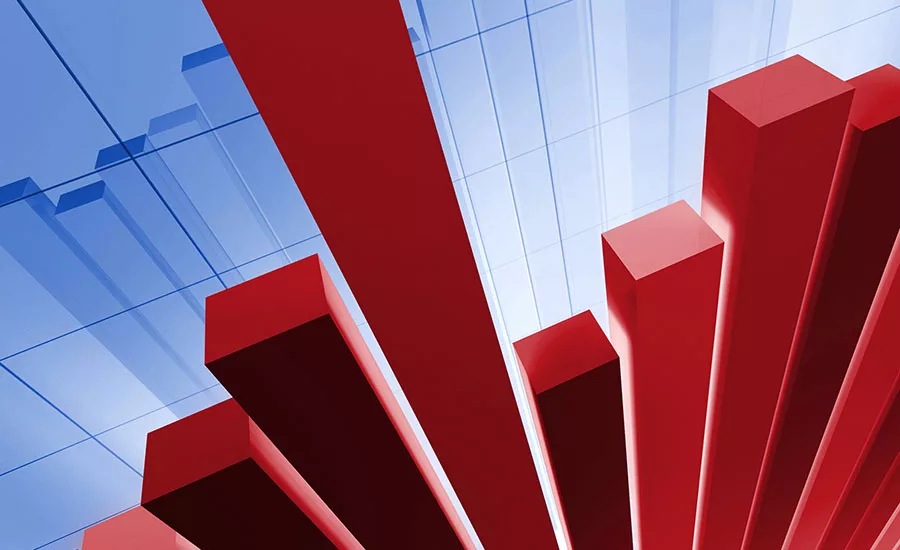Sika Posts Record Sales for 2021
Despite challenges, the company’s sales rose to a record CHF 9.2 billion (approximately $10 billion).

Sika recently reported that it performed well in a challenging environment in 2021. Despite the persistent COVID-19 pandemic and bottlenecks in the procurement of raw materials, sales rose to a record CHF 9.2 billion (approximately $10 billion), corresponding to growth of 17.1% in local currencies. The currency effect came to 0.2%. The acquisition effect was 2.0%, and organic growth amounted to 15.1%.
“2021 was expected to be a challenging year and it proved to be a very successful one for Sika,” said Thomas Hasler, CEO. “We are benefiting from a number of growth platforms and are in an ideal position to achieve long-term success. Thanks to our innovative technologies, we are the partner of choice for many customers in the construction and industrial sectors. We have solutions in place for all the development stages of construction markets, and government supported investment programs running into the billions will provide further impetus for our business. In addition, we are making targeted use of the megatrends that drive our key markets. There is huge demand for sustainable solutions. Our products and services enable our customers to reach their ambitious sustainability goals.”
The EMEA region (Europe, Middle East, Africa) reported a sales increase in local currencies of 16.1%. As in 2020, growth in distribution and refurbishment business outstripped growth in the other business segments. Nearly all countries in the region achieved double-digit growth rates. The countries in the Middle East, along with Eastern Europe (including Russia), the UK, and the countries in Africa benefited from a boost in growth. In general, purchases of Sika product solutions via e-commerce platforms saw an above-average increase.
The Americas region recorded growth in local currencies of 21%. Growth was driven primarily by large-scale refurbishment projects and new-build projects in the area of distribution and data centers. Strong growth rates were achieved in particular in Mexico, Colombia, Brazil, Peru, and Chile. In the Americas region, the strategic focus of business activities on big cities and metropolitan areas again paid off, as did the concentration on major infrastructure projects and the targeted realization of cross-selling potential.
In the period under review, Sika acquired DriTac, a U.S.-based company with a strong market position in the area of wood floor bonding. In addition, a manufacturer of mortar products in Brazil was brought into the Sika Group in the form of BR Massa.
In July, the company acquired American Hydrotech Inc. in the U.S. and its Canadian subsidiary Hydrotech Membrane Corporation. Hydrotech is a manufacturer of liquid membranes and offers comprehensive solutions for roofing and waterproofing.
Furthermore, Sika acquired the family-run Bexel Internacional S.A. de C.V., a manufacturer of tile adhesives and stuccos in Mexico. With this acquisition, Sika is expanding its position in the rapidly growing Mexican market for mortar products and is significantly increasing its production capacity with five strategically positioned production facilities.
Sales in local currencies in the Asia-Pacific region increased by 19.4%. Last year, China in particular benefited from the ongoing strong growth momentum with double-digit organic growth rates and successfully expanded its infrastructure and distribution business. India continued to see a dynamic development, while the countries in Southeast Asia recovered slowly from the severe lockdowns in the last quarter of the year. The trend in Japan remains challenging. Investment activity in the country’s construction market is still subdued.
During the period under review, Sika acquired Hamatite, the adhesives division of Yokohama Rubber Co., Ltd. Hamatite is a market leader in Japan, offering adhesives and sealants for the automotive and construction industries.
In China, Sika acquired Shenzhen Landun Holding Co., Ltd., a manufacturer of waterproofing products and technologies. The company operates two state-of-the-art production facilities that manufacture a full range of membranes and coatings for various waterproofing applications, mainly supplying infrastructure and commercial projects.
In the Global Business segment, Sika achieved growth in local currencies of 4.3%. Over the past financial year, the automotive industry experienced major bottlenecks in the electronic components supply chain. Whereas forecasts at the beginning of the year predicted a strong recovery in the volume of new vehicles manufactured compared with the previous year, there was in fact a sharp decline in the second half owing to the lack of availability of semiconductors.
Nevertheless, Sika anticipates continued growth stimuli from the megatrends evident in modern automotive production: electromobility and lightweight construction. In particular, the transition from traditional drive systems to electromobility gained pace during the pandemic and is benefiting from various government support programs in a number of countries.
Additional details are available at www.sika.com.
Looking for a reprint of this article?
From high-res PDFs to custom plaques, order your copy today!



.webp?height=200&t=1709670950&width=200)

